Laxmikanth Summary: Making of the Constitution
Real Facts for Making of the Constitution
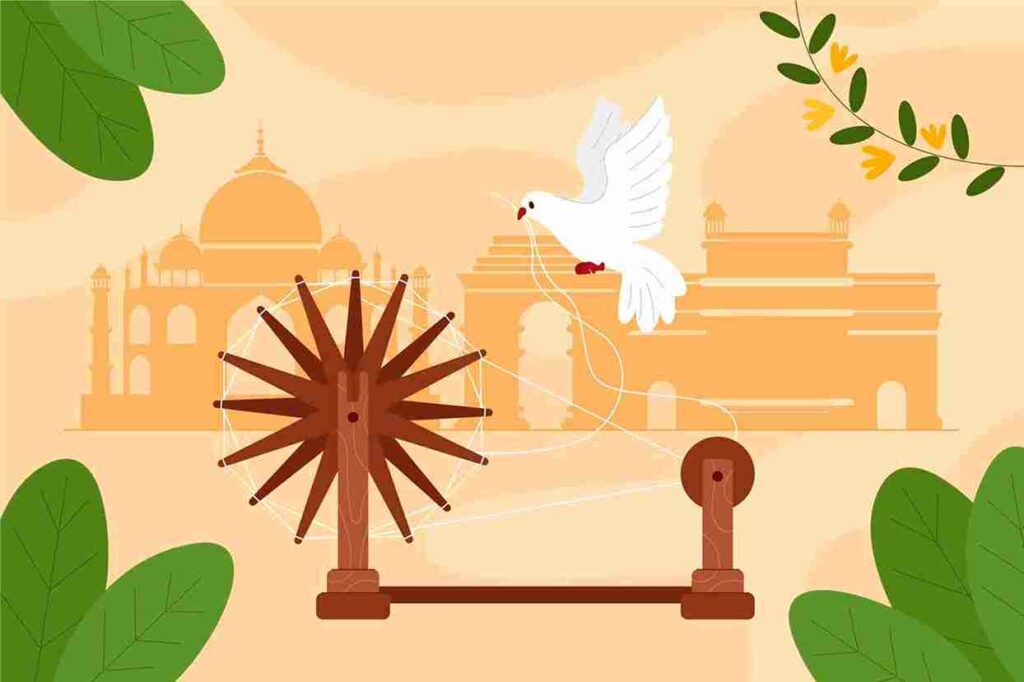
picture collected from freepik
Table of Contents
Making of The Constitution: Shocking Facts
- M.N. Roy first time kept forward the idea of the Constituent Assembly in 1934.
- In 1935, the Indian National Congress for the first time demanded a Constituent Assembly to frame the Constitution of India.
- In 1938 Jawahar Lal Nehru declared that the Constitution of free India must be framed by a Constituent Assembly whose members are to be elected based on an adult franchise. It should be free from any external interference.
- In the 1940s ‘August Offer’ demand was accepted and in 1942 Sir Stafford Cripps was sent to India with a draft proposal on the framing of an independent Constitution to be adopted after World War II.
- Muslim league rejected the proposal as it demanded two dominion states with two separate constituent assemblies.
- Later in 1946, the Cabinet mission put forward the idea of a Constituent Assembly which satisfied both the INC and the Muslim League. Making of The Constitution: Shocking Facts
- In November 1946, the Constituent Assembly was constituted under the scheme formulated by the Cabinet Mission Plan.
Demand for Constituent Assembly
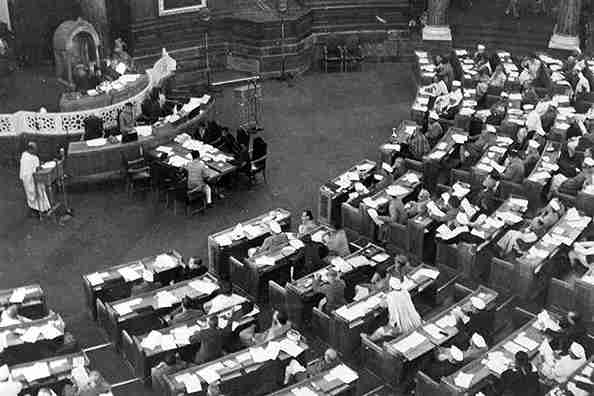
Constituent Assembly
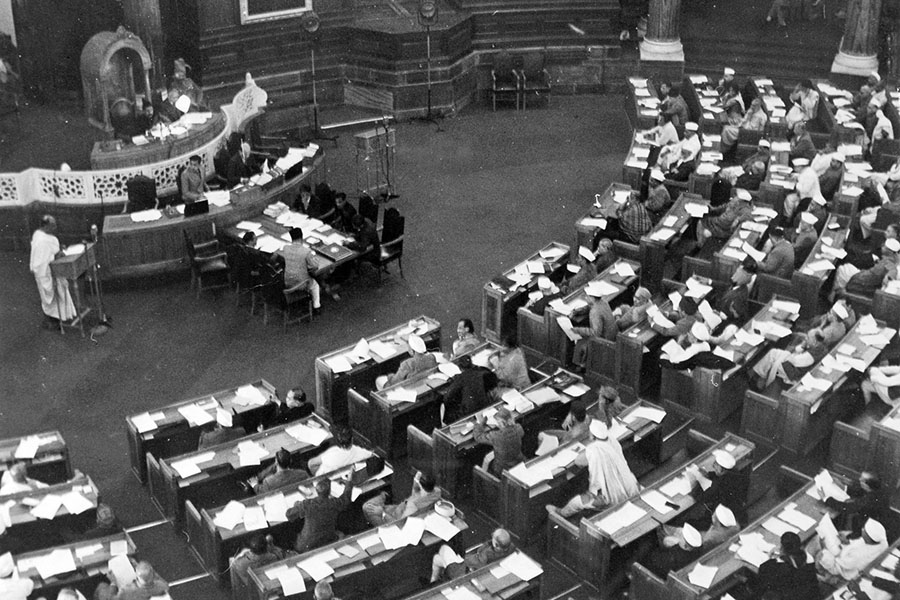
The Cabinet Mission Plan provisioned the following scheme for setting up the Constituent Assembly of India:
- The total strength of the Constituent Assembly was 389. Of these, 296 seats were allotted to British India and 93 seats to the Princely States. Out of 296 seats allotted to British India, 292 members were drawn from the eleven governors’ provinces 4 from the four chief commissioners’ provinces, and one from each.
- Each province and princely state were to be allotted seats in proportion to their respective population. Roughly one seat was to be allotted for every million population. Roughly one seat was to be allotted for every million population.
- Seats allocated to each British province were to be divided among Muslims, Sikhs, and General (others), in proportion to their population.
- The representatives of each community were to be elected by members of that community in the provincial legislative assembly and voting was to be by the method of proportional representation using a single transferable vote.
- The representatives of the princely states were to be nominated by the heads of the princely states.
Making of The Constitution: Shocking Facts
Thus, under the above provisions, the Constituent Assembly became a partly elected and partly nominated body. The members were indirectly elected by the members of the provincial assemblies. It did not present the sentiments of the masses as the members of provincial assemblies themselves were elected on a limited franchise.
- The election for 296 seats allotted to the British Indian Provinces was held in July August 1946. Out of these seats, the Indian National Congress won 208 seats, the Muslim League won 73 seats, and the remaining 15 seats were held by independent players.
- 93 seats allocated to princely states were not filled as they refrained from the Assembly.
- Though the assembly did not reflect the mass verdict it had representatives from every section of the society.
- Mahatma Gandhi was not a member of the Constituent Assembly.
Making of The Constitution: Shocking Facts
Working of the Constituent Assembly
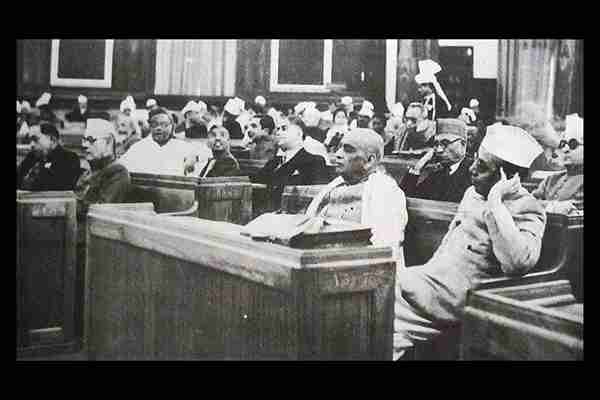
Making of The Constitution: Shocking Facts
The Constituent Assembly held its first meeting on December 9, 1946. Muslim League boycotted the meeting and demanded a separate state of Pakistan. Only 211 members attended the first meeting.
Dr. Sachchidananda Sinha was elected as the temporary/interim President of the Assembly, following the French practice. Later Dr. Rajendra Prasad was elected as the President of the Assembly and both H.C. Mukherjee and V.T. Krishnamachari became the Vice-President of the Assembly.
Objective Resolution: On December 13, 1946, Jawahar Lal Nehru moved the ‘Objective Resolution’ in the Constituent Assembly which was unanimously adopted by the assembly on January 22, 1947.
Making of The Constitution: Shocking Facts
The important provisions of the Resolution were:
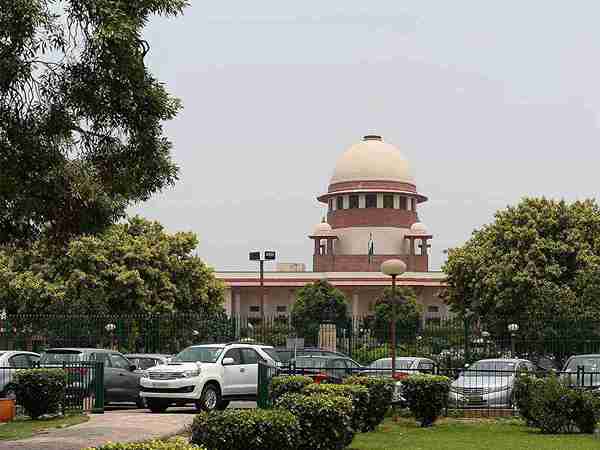
- This Constituent Assembly declares its firm and solemn resolve to proclaim India as an Independent Sovereign Republic and to draw up for her future governance a Constitution.
- Wherein the territories comprising present-times British India, the territories that now form the Indian State and such other parts of India as are outside India and the States as well as other territories as are willing to be constituted into independent sovereign India, shall be a Union of them all. Making of The Constitution: Shocking Facts
- Wherein the said territories, whether with their present boundaries or with such others as may be determined by the Constituent Assembly and thereafter according to the law of the Constitution, shall possess and retain with the residuary powers and exercise all powers and functions of the Government and administration implied in the Union or resulting therefrom
- Wherein all power and authority of Sovereign Independent India, its constituent parts and organs of Government are derived from the people.
- Wherein shall be guaranteed and secured to all the people of India justice, social, economic, and political; equality of status of opportunity, and before the law; freedom of thought, expression, belief, faith, worship, vocation, association, and action, subject to the law and public morality.
- Wherein adequate safeguards shall be provided for minorities, backward and tribal areas, and depressed and other backward classes.
- Whereby shall be maintained the integrity of the territory of the Republic and its sovereign rights on land, sea, and air according to justice and the law of civilized nations.
- This ancient land attains its rightful and honoured place in the world and makes its full and willing contribution to the promotion of world peace and the welfare of mankind.
Making of The Constitution: Shocking Facts
Initially, the representatives of the princely states stayed away from the Constituent Assembly. On April 28, 1947 representatives of the 6 states became part of the assembly and after the acceptance of the Mountbatten Plan of June 3, 1947, most of the other princely states entered the assembly. Later the members of the Muslim League from the Indian dominion also joined the assembly.
Changes after the Indian Independence Act, of 1947: The act of 1947 made the following changes
- The Assembly became the fully sovereign body and was empowered to frame any Constitution it pleased. Making of The Constitution: Shocking Facts
- It became the legislative body. It became responsible to frame the Constitution of India and enact ordinary laws for the country. Whenever the assembly worked as a Constitutional body, it was chaired by Dr. Rajendra Prasad and when it met as a legislative body, G.V. Mavlankar became the chairman (this arrangement continued till November 26, 1949).
- Muslim League withdrew from the assembly and it reduced the total strength of the assembly to 299 from 389.
- The strength of Indian provinces reduced to 229 from 296 and that of princely states to 70 from 93.
Making of The Constitution: Shocking Facts
Carnet Affairs January 2024 part 1
Other Functions performed by the Assembly:

- Ratified India’s membership of the Commonwealth in May 1949.
- Adopted the National Flag of India on July 22, 1947.
- Adopted National Anthem on January 24, 1950.
- Elected Dr Rajendra Prasad was the first President of India on January 24, 1950
On January 24, 1950, the Constituent Assembly held its final session but continued as the provincial parliament from January 26, 1950, till the first general elections in 1951-52 were held.
Making of The Constitution: Shocking Facts
Committees of the Constituent Assembly
Making of The Constitution: Shocking Facts
| Major Committee | Committee | Headed by |
| Union Powers Committee | J.L. Nehru | |
| Union Constitution Committee | J.L. Nehru | |
| Provincial Constitution Committee | Sardar Patel | |
| Drafting Committee | Dr B.R. Ambedkar | |
| Advisory Committee on Fundamental Rights, Minorities and Tribal and Excluded Areas | Sardar Patel | |
| Fundamental Rights Sub-Committee | J.B. Kriplani | |
| Minorities Sub-Committee | H.C. Mukherjee | |
| North-East Frontier Tribal Areas and Assam Excluded & Partially Excluded Areas Sub-Committee | Gopinath Bardoloi | |
| Excluded and Partially Excluded Areas (Other than those in Assam) Sub- Committee | A.V. Thakkar | |
| North-West Frontier Tribal Areas Sub-Committee | ||
| Rules of Procedure Committee | Dr Rajendra Prasad | |
| States Committee (for Negotiation with states) | J.L. Nehru | |
| Steering Committee | Dr Rajendra Prasad | |
| …………………………… | Making of The Constitution: Shocking Facts.. | …………………… |
| Minor Committee | Finance and Staff Committee | Dr Rajendra Prasad |
| Credentials Committee | A.K. Ayyar | |
| House Committee | B. Pattabhi Sitaramayya | |
| Order of Business Committee | Dr K.M. Munshi | |
| Ad-hoc Committee on National Flag | Dr Rajendra Prasad | |
| Committee on Functions of the Constituent Assembly | G.V. Mavalankar | |
| Ad-hoc Committee on the Supreme Court | S. Varadachari | |
| Committee on Chief Commissioners’ Provinces | B. Pattabhi Sitaramayya | |
| Expert Committee on the Financial Provisions of the Union Constitution | Nalini Ranjan Sarkar | |
| Linguistic Provinces Commission | S.K. Dar | |
| Special Committee to Examine the Draft Constitution | J.L. Nehru | |
| Ad-hoc Committee on Citizenship | S. Vallabhachari | |
| Press Gallery Committee | Usha Nath Sen |
Drafting Committee
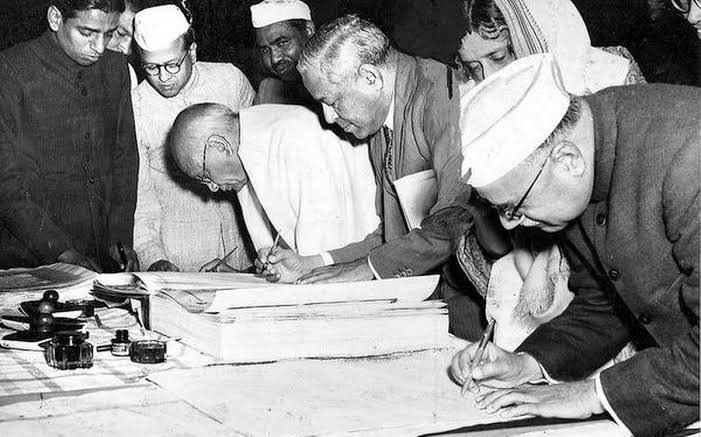
Making of The Constitution: Shocking Facts
On August 29, 1947, a Drafting Committee was set up to prepare a draft of the new Constitution. It was a seven-member committee with Dr. B.R. Ambedkar as the Chairman of the committee. The other 6 members include:
Members of the Drafting Committee
- N. Gopalaswamy Ayyangar
- Alladi Krishnaswamy Ayyar
- Dr. K.M. Munshi
- Syed Mohammad Saadullah
- N.M. Rau
- T.T. Krishnamachari
The first draft prepared by the committee was published in February 1948. The second draft was published in October 1948.
Making of The Constitution: Shocking Facts
Enactment of the Constitution
- Dr. B.R. Ambedkar introduced the final draft of the Constitution in the Assembly on November 4, 1948, for the first reading. The second reading was held on November 15, 1948, and the third reading on November 14, 1949.
- The draft was passed on November 26, 1949 (thus, celebrated as Constitution day).
- The Constitution as adopted on November 26, 1949, contained 395 Articles, and 8 Schedules.
Making of The Constitution: Shocking Facts
TIMELINE OF FORMATION OF ‘THE CONSTITUTION OF INDIA
| 6 DEC 1946 | Formation of the Constitution Assembly (in accordance with French Practice) |
| 9 DEC 1946 | The first meeting was held in the constitutional hall (now the Central hall of parliament house). 1st person to address – J.B. Kirpalani |
| 11 DEC 1946 | President Appointed: Rajendra Prasad, Vice-Chairman: Harendra Coomar Mookerjee & Constitutional Legal Advisor B.N.Rau |
| 13 DEC 1946 | An ‘Objective Resolution’ was presented by Jawaharlal Nehru laying down the underling principles of the constitution which later became the President of the Constitution |
| 22 JAN 1947 | Objective resolution unanimously Adopted |
| 22 JULY 1947 | National Flag Adopted |
| 15 AUG 1947 | Achieved Independance India. Split into Dominion of India and Dominion of Pakistan |
| 29 AUG 1947 | Drafting Committee appointed with Dr. B.R. Ambedkar as the Chairman. |
| 16 JULY 1948 | Along with Harendra Coomar Mookerjee, V.T. Krishnamachari was also elected as second Vice- president of constituent assembly |
| 26 NOV 1949 | Constitution of India’ passes and adopted by the assembly |
| 24 JAN 1950 | Last meeting of constituent assembly. Constitution of India’ all signed & accepted (with 395 articles, 8 schedules, 22 parts) |
| 26 JAN 1950 | Constitution of India came into force (It took 2 years, 11 months, 18 days at a total expenditure of 6.4 million to finish) |
- Provisions of citizenship, elections, provisional parliament, temporary and transitional provisions, and short title are contained in Articles 5, 6, 7, 8, 9, 60, 324, 366, 367, 379, 380, 388, 391, 392, and 393 came into force on November 26, 1949. The remaining provisions came into force on January 26, 1950.
- With the adoption of the Constitution, all the provisions under the Indian Independence Act, of 1947, and the Government of India Act, of 1935 were repealed.
- The Abolition of Privy Council Jurisdiction Act (1949) continued.
Making of The Constitution: Shocking Facts
Enforcement of the Constitution
- The provisions of the Indian Constitution related to citizenship, elections, provisional parliament, temporary and transitional provisions, and short title. contained in Articles 5, 6, 7, 8, 9, 60, 324, 366, 367, 379, 380, 388, 391, 392, and 393 came into force on November 26, 1949.
- The majority of the Constitution, excluding the mentioned provisions, came into force on January 26, 1950, celebrated as Republic Day. This date was chosen due to its historical significance, being the day of the Purna Swaraj celebration in 1930 after the resolution of the Lahore Session (December 1929) of the INC.
- The ‘date of commencement‘ of the Constitution marks the celebration of Republic Day, and it symbolizes the culmination of the independence movement.
- The Indian Independence Act of 1947 and the Government of India Act of 1935, along with all enactments amending or supplementing the latter Act, were repealed with the commencement of the Constitution.
- The Abolition of Privy Council Jurisdiction Act (1949) was an exception and continued to be in effect after the Constitution came into force.
Making of The Constitution: Shocking Facts
Experts Committee of the Congress
- Formation of the Experts Committee: On July 8, 1946, while Constituent Assembly elections were ongoing, the Congress Party (Indian National Congress) appointed an Experts Committee to prepare material for the Constituent Assembly.
- Committee Members: Jawaharlal Nehru served as the Chairman, and other members included M. Asaf Ali, K.M. Munshi, N. Gopalaswami Ayyangar, K.T. Shah, D.R. Gadgil, Humayun Kabir, and K. Santhanam.
- Additional Member and Convener: Krishna Kripalani was later co-opted as amember and the convener of the committee on the Chairman’s proposal.
- Committee Proceedings: The committee had two sittings: the first in New Delhi from July 20 to 22, 1946, and the second in Bombay from August 15 to 17, 1946.
- Discussion Topics: Apart from individual notes prepared by its members, the committee deliberated on the procedure to be adopted by the Constituent Assembly. They also discussed the appointment of various committees and drafted a resolution on the objectives of the constitution, to be presented during the first session of the Constituent Assembly.
- Role in Constitution Making: According to Granville Austin, an American constitutional expert, the Congress Experts Committee played a crucial role in shaping India’s constitution. They worked within the framework of the Cabinet Mission Scheme, providing general suggestions on autonomous areas, powers of provincial and central governments, princely states, and the amending power. The committee’s drafted resolution closely resembled the Objectives Resolution.
- Significance: The committee’s efforts were instrumental in setting the foundation for India’s constitution, guiding the early discussions and shaping key aspects within the constitutional framework.
Making of The Constitution: Shocking Facts
Criticism of the Constituent Assembly
The Constituent Assembly was criticized on various grounds including:
- Not a Representative Body as it did not reflect the mass verdict due to election by the limited franchise.
- Not a Sovereign body as it was formed based on the proposals of the British. Government and held its meetings with their permission.
- Took greater time to frame the Constitution as compared to the American Constitution which took only 4 months.
- Dominated by Congress
- The domination of Lawyers and Politicians and the representation of other professionals were not significant
- Dominated by Hindus
Do You Know!
- S.N. Mukherjee was the chief draftsman of the constitution in the Constituent Assembly.
- Prem Behari Narain Raizada was the calligrapher of the Indian Constitution. He had handwritten the original text of the constitution in a flowing italic style.
- It was beautified and decorated by artists from Shanti Niketan including Nand Lal Bose and Beohar Rammanohar Sinha.
- The calligraphy of the Hindi version of the original constitution was done by Vasant Krishan Vaidya and decorated and illuminated by Nand Lal Bose.
- The elephant was adopted as the symbol of the Constituent Assembly. Thus, its figurine was carved on the seal of the assembly.
- Originally, the Constitution of India did not make any provision concerning an authoritative text of the Constitution in the Hindi Language. Later, a provision in this regard was made by the 58th Constitutional Amendment Act of 1987 which inserted a new Article 394-A in the last part of the constitution.
Making of The Constitution: Shocking Facts
In this document, you have learned that
- In 1935, the Indian National Congress for the first time demanded a Constituent Assembly to frame the Constitution of India.
- In November 1946, Constituent Assembly was constituted under the scheme formulated by the Cabinet Mission Plan.
- Muslim League withdrew from the assembly and it reduced the total strength of the assembly to 299 from 389. The strength of Indian provinces reduced to 229 from 296 and that of princely states to 70 from 93.
- Members of the Drafting Committee
- N. Gopalaswamy Ayyangar
- Alladi Krishnaswamy Ayyar
- Dr. K.M. Munshi
- Syed Mohammad Saadullah
- N.M. Rau
- T.T. Krishnamachari
- One of the main criticism of The Assembly was it being a domination of Lawyers and Politicians and representation of other professionals was not significant.
Making of The Constitution: Shocking Facts
About the Author
Sisir Mondal
Administrator
My name is SISIR MONDAL, I complete my graduate from University of Kalyani , West Bengal, India . I am like to build WordPress website and also developing this type of website . If you want your website , you can contact me trough email. thanks to visit this site.
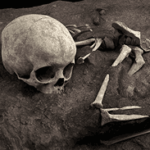
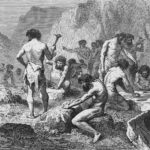
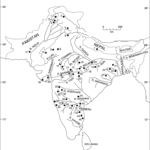



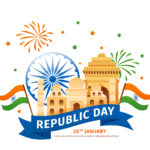


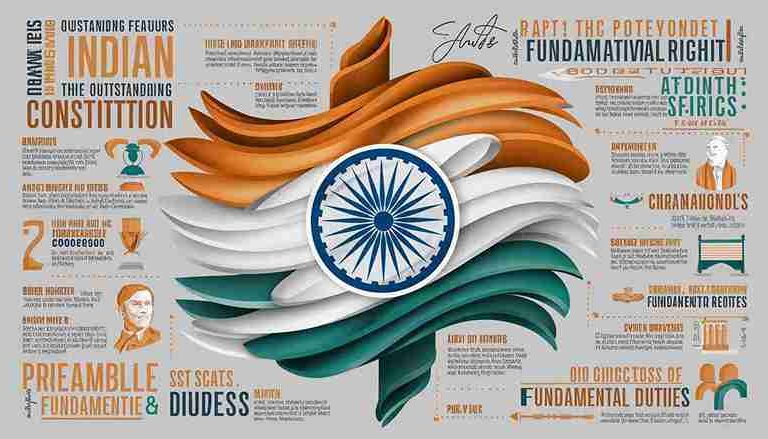
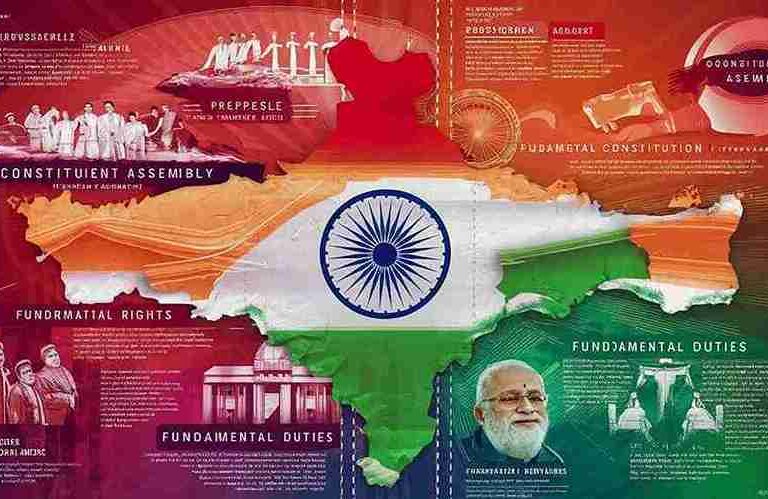
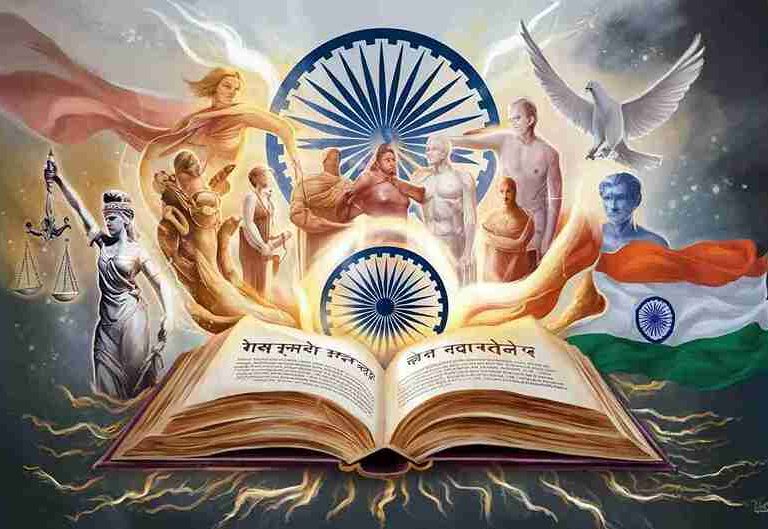



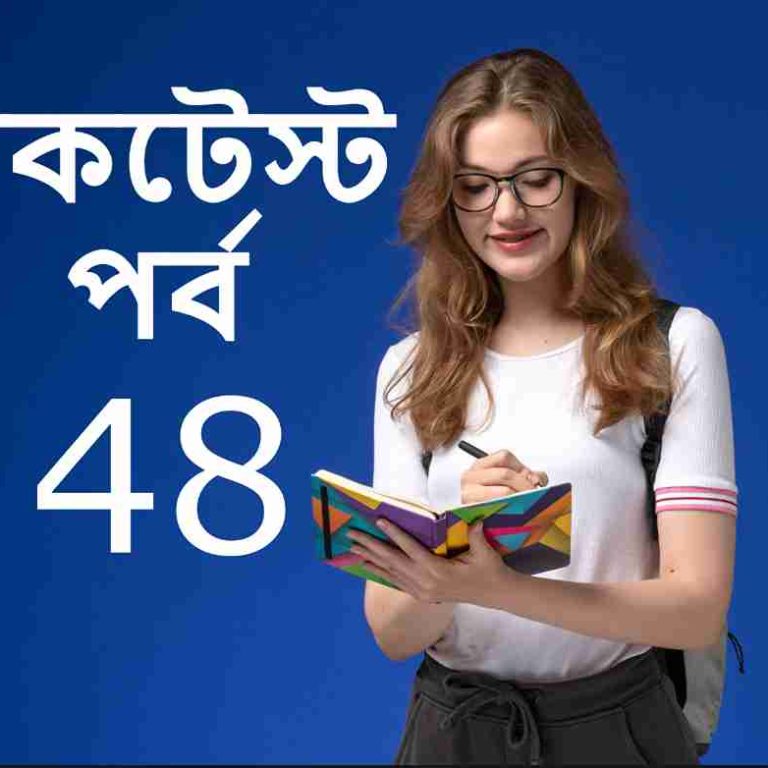
information is right